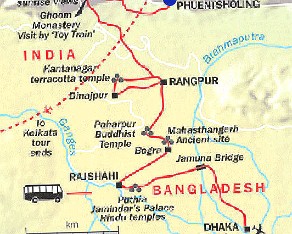
1 TO REMOVE CAPTIONS USE HIDE INFO BUTTON.
We have completed our trip through Bangladesh, Sikkim and West Bengal (India), which are linked at our home page. We now enter the Hidden Kingdom of Bhutan through a checkpoint at Phuentsholing. Bhutan used to be one of the most isolated nations in the world, but developments including direct international flights, internet, mobile phone networks, and cable television have increasingly opened the doors. Yet, Bhutan has balanced modernization with its ancient culture and traditions under the guiding philosophy of Gross National Happiness (GNH). Rampant destruction of the environment has been avoided. The government takes great measures to preserve the nations traditional culture, identity and the environment. Accordingly, in 2006 Business Week rated Bhutan the happiest country in Asia and the eighth happiest country in the world citing a global survey conducted by the University of Leicester in 2006 referenced to as the World Map of Happiness. We hope you enjoy this part of the trip.
We have completed our trip through Bangladesh, Sikkim and West Bengal (India), which are linked at our home page. We now enter the Hidden Kingdom of Bhutan through a checkpoint at Phuentsholing. Bhutan used to be one of the most isolated nations in the world, but developments including direct international flights, internet, mobile phone networks, and cable television have increasingly opened the doors. Yet, Bhutan has balanced modernization with its ancient culture and traditions under the guiding philosophy of Gross National Happiness (GNH). Rampant destruction of the environment has been avoided. The government takes great measures to preserve the nations traditional culture, identity and the environment. Accordingly, in 2006 Business Week rated Bhutan the happiest country in Asia and the eighth happiest country in the world citing a global survey conducted by the University of Leicester in 2006 referenced to as the World Map of Happiness. We hope you enjoy this part of the trip.
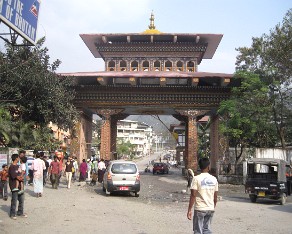
2 This is the customs crossing where we had to walk through a puddle of antiseptic due to bird flu fears.
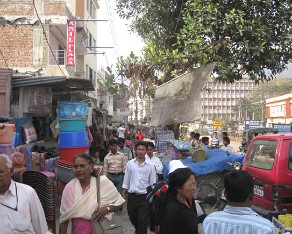
3 We are now in Bhutan. Upon his coronation in 1974, King Jigme Singye Wangchuck declared that Bhutan would maintain a minimum 60 percent forest cover - by decree, considering that protecting the watersheds would in turn safeguard Bhutan's greatest export, hydropower. Other national policies, such as the wholesale banning of cigarette sales to preserve the health of the citizenry or the enforced wearing of a national costume (a knee-length kimono-like garment tied at the waist for men and a narrow, handwoven sheath for women), push Bhutan firmly into the realm of nanny states.
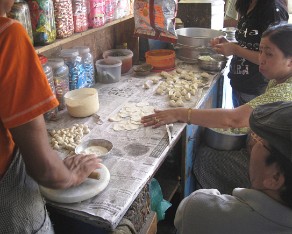
4 There are many food vendors though out the alley ways in Phuentsholing so we find one making moomfali garzul which is like a momo or potsticker. Very good!
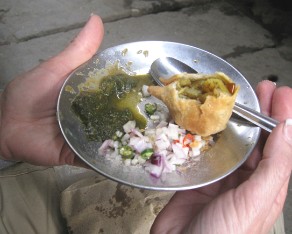
5 We bought some moomfali garzul at 3 rupees each, thats about six cents. They were delicious with hot sauce and onions.
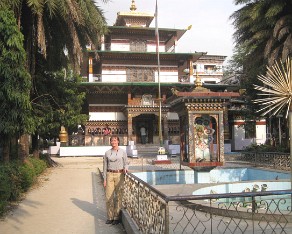
6 We make our own tour of the town and come across this lovely Buddhist temple in the center of the city.

7 The next morning we leave Phuentsholing early in the morning for a 7 to 9 hour drive to Thimpu. We pass sights along the way. The landscape ranges from subtropical plains in the south to the Himalayan heights in the north, with some peaks exceeding 7,000 metres (23,000 ft). The state religion is Vajrayana Buddhism, and the population is predominantly Buddhist, with Hinduism being the second-largest religion. The capital and largest city is Thimphu. After centuries of direct monarchic rule, Bhutan held its first democratic elections in March 2008. Among other international associations, Bhutan is a member of the United Nations and the South Asian Association for Regional Cooperation.
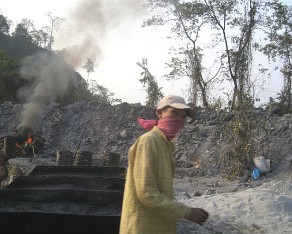
8 We have been promised difficult roads while in Bhutan but the first thing I see are road workers repairing the roads.
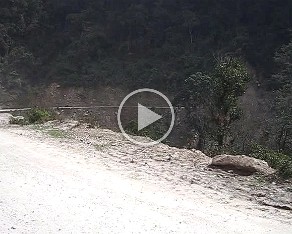
12 Please wait, Quicktime movie loading. The roads start out pretty rough, dusty, windy, narrow and dangerous but promise to get much worse later as we enter the interior of Bhutan.
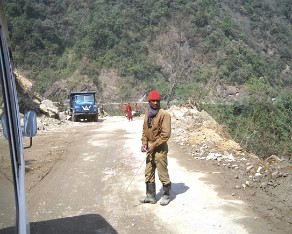
13 We come to a stop where there has been a landslide and the crew is dynamiting it away. This stop takes a while but is interesting and seeing the roadworkers at work. There are so many landslides during the monsoon season that these roads can be impassable.
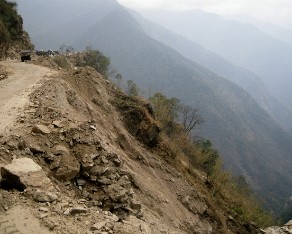
15 The road is narrow and rough. Occaisionally we come across a vehicle headed in the other direction and one of the vehicles must back up until the road widens enough so we can squeak by without going over the edge.
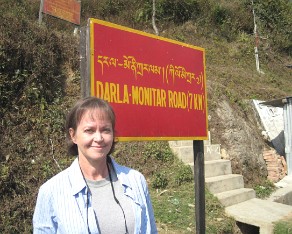
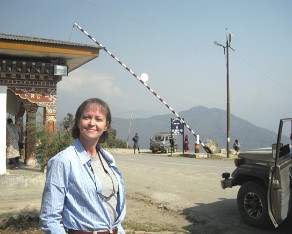
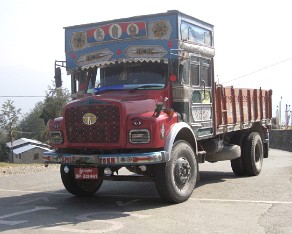
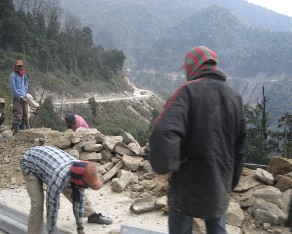

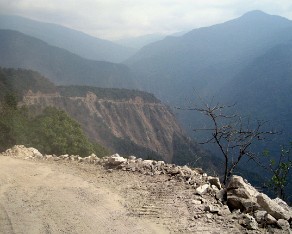
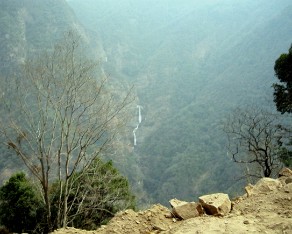
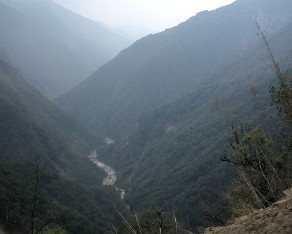
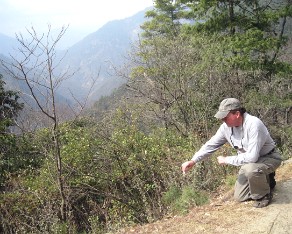
Home ---- TRIP: Bhutan & Kolkata 2009
TO RETURN "HOME" to TripPics.us: Click the BLUE "UP" arrows.